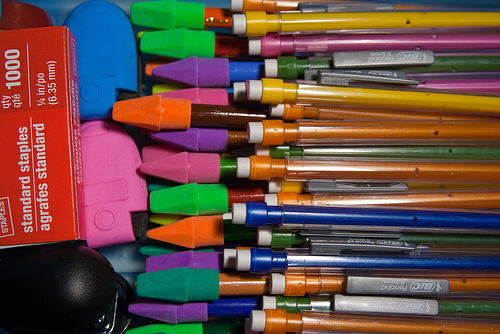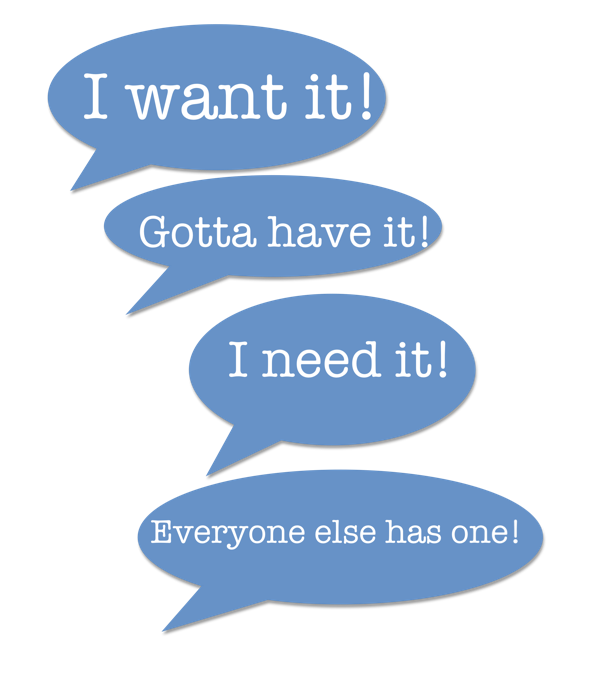Hurricane Sandy was a massive storm that caused great devastation and loss of life along the Northeastern United States. My prayers go out to all of those who lost so much in the storm. Having lived through it with my children, and having been incredibly fortunate not to have been severely impacted by its wrath, I now have the opportunity to reflect on the many teachable moments Sandy has provided me and my children. Here are a few of the things that we were reminded of this past week in the aftermath of a superstorm.
Lesson Number One: Less is More
In the hours before the storm hit, my family and I rushed to remove all the items from our basement to protect them from being destroyed by the expected ten to fifteen foot tidal surge that would soon sweep through our community. Living only minutes from the Long Island Sound, and having a tidal estuary in our backyard, we had good reason to fear that our property might be inundated by the salty waters that Sandy would send our way.
As my family raced to bring all of our belongings from our basement up the stairs to areas we hoped would be spared, I took a moment to evaluate the situation. What was all this “stuff” that we were moving around? If the waves rolled in and completely ruined all of these items, would my life be greatly impacted? I realized then, that none of this “stuff” really mattered. All that really mattered was the safety of the people helping to move all that stuff upstairs. As long as they were safe, the rest was all either replaceable or simply unnecessary. So the first teachable moment for me was the opportunity to take a good look at all the things that we have, to recognize how unimportant most of those things really are, and to focus on what really matters.
We spend so much of our time, working so hard to accumulate things - new clothes, a new car, new furniture, new toys, a bigger house. Do those things really improve our quality of life? Is all of that stuff really so important? Is it important enough to justify the amount of time we spend trying to get more of it? Perhaps constantly adding to our "stuff" diminishes the value of each item and teaches our children the wrong message, that each item is only valuable and useful until we are able to find its newer, and more exciting replacement.
As I was hauling all this "stuff" up the stairs, I was struck with the realization that if everything were to get flooded in that space, it is not the items that I would miss most. It is the space itself that provided us the opportunity to have fun, to learn, to be together and to create great memories, that is what we do in our homes (no matter how big or small, full or empty), and those experiences cannot be destroyed even by a superstorm.
The tidal surge came and went and the flood waters filled our street. We returned to our home the next day to assess the damage. As we approached the lowest elevation point on our street, we had to walk knee deep through the cold salty water to get to our home. The water was slowly receding, and as we approached our home, we realized that we were incredibly lucky. The water had reached our garage but did not find its way into our home. Many of our neighbors were not as lucky.
As I looked at the piles of "stuff" now upstairs untouched by the flood, I decided to pack much of it up, along with many other items from around the house, and put everything in boxes to donate. Perhaps someone else, someone who lost so much in the storm, or others who had so little before the storm would be happy to have some.
Lesson Number Two: We are all in this together.
After realizing the great devastation and loss that many are experiencing after the storm, people are mobilizing in great numbers to help those in need. This sense of connection, kindness and compassion was also palpable in the days and hours before and during the storm. There seemed to be a feeling in the air that we were all in this together, whatever may come.
This strong sense of interconnection was in stark contrast to how we live our normal, busy everyday lives. Usually, we are so focused on meeting our own needs and the needs of our families, that we forget how wonderful it is to connect to those around us. This incredible weather event connected so many people in so many ways. It was not just the opportunity to donate to the hurricane relief efforts after the storm, it was also the numerous phone calls from friends and family in other parts of the country reaching out to check in to see if we were safe. It was the caring conversations with total strangers in the grocery line in the hours before the storm, reassuring one another that it would be OK and making suggestions on what we might need in the days to come. It was the endless e-mails from friends and neighbors asking who lost power, who needed a warm place to stay, who needed food, and following up with offers to help.
This was such a wonderful reminder that we all face challenges in our lives and we can get through those challenges with greater ease if we show kindness and compassion to one another. Although we live in a western world in which we are often focused on “me” and “mine,” it was so nice to see that in times of great need, people were focused on “you” and “yours” or on “us.” We saw first hand how much richer life is when everyone cares a bit more for one another.
Lesson Number Three - If Given the Choice to Laugh or to Cry, Choose to Laugh!
The night of the storm, we decided to leave our house out of concern for our safety and spend the night in a home nearby with 25 friends and family members. In the midst of the storm we gathered. We played cards, listened to the news and laughed a bit at the situation we were in. At the time, I was fascinated by the storm and the potentially devastating impact that it would have on people’s lives. So, the laughter that night at first seemed a bit inappropriate. However, I soon realized that there was nothing any of us could do at the time, other than what we were doing. We had a choice. We could tremble with fear and worry in anticipation of what might be, or we could chose to sit tight, recognize that we were safe and make the best of our current situation. This is so often our choice in life when circumstances arise that are beyond our control. When given the choice to laugh or to cry when life gets challenging, always chose to laugh, and that is what we did.
There were many opportunities to make the best of a bad situation in the days that followed. When we returned home, large hundred-year-old trees had fallen in our yard. We were in awe of their grandeur and of the massive root systems that towered over us as they lay sadly on their sides, permanently uprooted. As children so often do, my children saw the fun and found the joy in this new situation and decided to climb up on the now horizontal trunks and delighted in the giant bridges the trees now made across our yard. They played in the enormous holes in the ground left behind by the now uprooted giants. They splashed through the waters that flooded our streets and explored their new surroundings with awe and with laughter.
We saw first hand, on television, in the news and in our own community, the devastation that this storm brought to so many people’s lives, but in the midst of those struggles that often cause tears, it was so wonderful to be able to laugh a bit at the absurdity of it all and find great joy in the fact that we are here, that we all came together to face the storm, and that we are incredibly grateful for all that we have, most of which a storm could never take away.





















